Circular fashion is an alternative system in which clothes are used and circulated for as long as possible, ideally designed and produced with this intention, so the clothing is built with durability in mind.
This model rejects the linear take-make-waste economy in place today, that globally sends an estimated 92 million tonnes of textiles to landfill each year, according to Global Fashion Agenda (GFA), by prioritizing elements such as durability, repair and reuse.
Key activities to achieving circularity in fashion involve models like garment rental, resale, off-price selling and recycling in order to reduce product waste and environmental footprint.
By learning the basics, companies are well on their way to creating a circular fashion wardrobe that serves both the wearer and the earth.
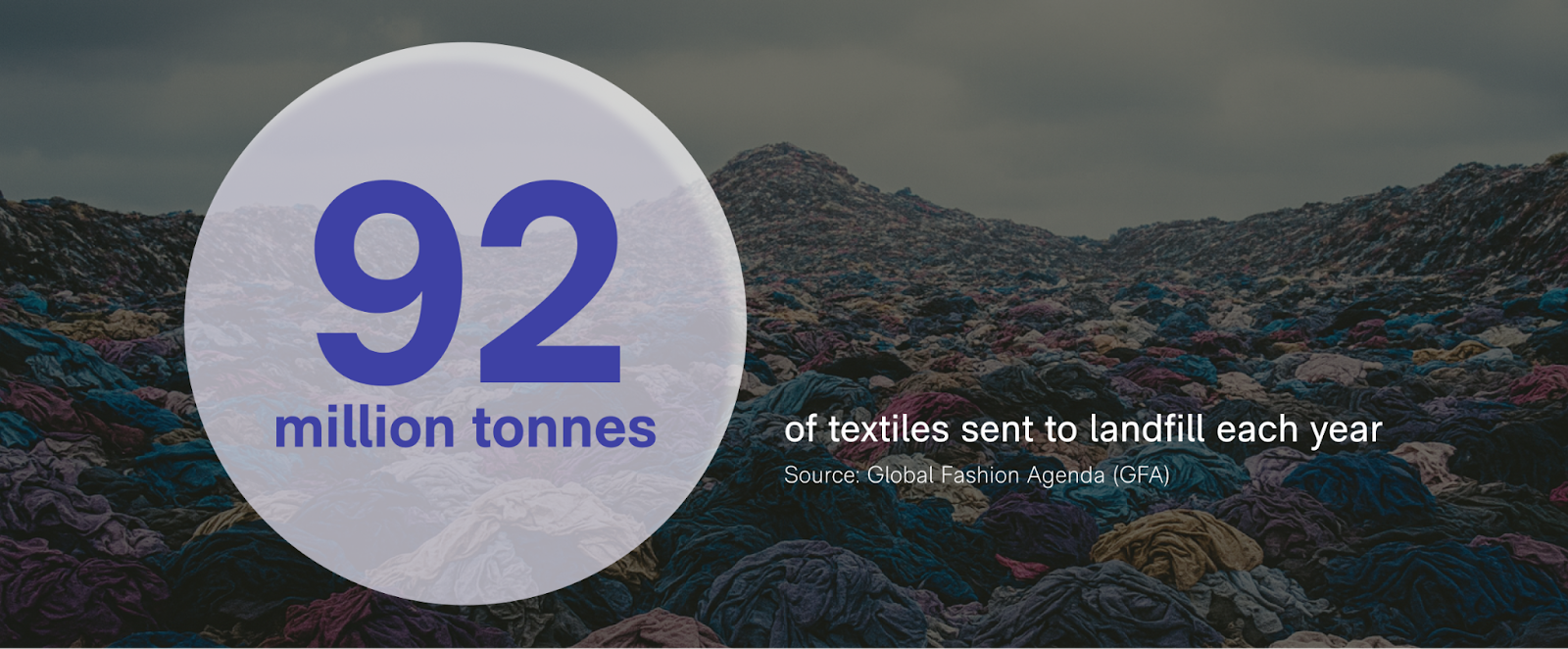
Key takeaways
- Circular fashion establishes a more sustainable loop in which apparel is worn for the longest time possible. It’s an approach that avoids waste through reuse, repair, recycling and other models, in opposition to the conventional ‘take-make-dispose’ model.
- The existing linear fashion system is a major contributor to environmental issues. These come with textile waste in landfills, excessive water usage and significant carbon footprint from production and shipping, among other problems.
- Newer business models are making circular fashion more mainstream; through clothing resale platforms, subscription boxes, repair workshops and more, these services offer tangible means for consumers and brands to participate in a more sustainable economy.
- Technology is crucial to the future of circular fashion. New advances in textile recycling, supply chain traceability and business model research mean circularity is becoming simpler to implement.
What is circular fashion?
Circular fashion is a radical system that re-imagines how we design, produce, wear and dispose of clothes, aligning with the principles of a circular business model. In fashion, this innovative business model aims to keep apparel, footwear and accessories in their highest value state for as long as possible through reuse, repair, remaking, resale or recycling. As such, more circular fashion should be a core element of the sustainability strategies of brands and companies.
In contrast to the linear fashion industry, it offers a more sustainable alternative that prioritizes resource efficiency in response to the rise of waste and climate change concerns.
The core elements of circular fashion
At its core, circular fashion seeks to keep clothing and textiles in use, not waste. It departs from the traditional “take-make-dispose” linear model that has dominated the industry for decades.
Instead of a single line from production to landfill, it becomes a loop. It’s a model that emphasizes eliminating waste and pollution by keeping clothes and fibers in endless circulation.
The aim is to make a closed-loop system, one that doesn’t have to keep pulling on virgin resources and therefore doesn’t put as much stress on the environment as producing new clothes from scratch. It’s focused on extending the life of clothes and the value of that first wear.
The key principles of circular fashion
At the heart of circular fashion is circular design – the practice of creating garments that are made to last, easy to repair and designed with end-of-life in mind. This means considering the full product lifecycle from the very beginning, ensuring products can be reused, recycled or reintegrated into the system rather than sent to landfill.
Innovative materials
Next-gen sustainable materials, sometimes called ‘eco-materials’, play a central role. Choosing renewable, organic, or recycled fibers helps reduce dependency on virgin resources and lowers the environmental footprint of production. From recycled polyester to regenerative cotton, material choice shapes the impact of every product.
Better manufacturing processes
Equally important are responsible manufacturing processes, such as minimizing water and energy use, reducing chemical inputs and improving working conditions across the supply chain. Efficiency and ethics go hand in hand.
More responsible consumption
Consumers are crucial players in the circular loop. Proper garment care, repair, resale and creative reuse, like upcycling, all extend a product’s useful life. And when wear is no longer possible, textile recycling ensures valuable materials can be broken down and re-spun into new fibers, keeping resources in circulation.
Circular fashion isn’t just a trend; it’s a systemic shift. Each stage, from design to disposal, offers an opportunity to cut waste, reduce emissions and build a truly sustainable fashion future.
Linear vs. circular fashion
The linear fashion model is a ‘take-make-dispose’ model. It uses significant resources to generate products that are frequently trashed soon after. This causes huge resource demand, waste and pollution.
Instead, the circular model is more regenerative. It maintains materials in use via reuse, repair and recycling. That results in less waste, less impact, more resource efficiency.
Here is a simple breakdown of linear vs circular fashion:
- Linear Fashion Model:
- Resource use: High (virgin materials)
- Production: Fast, high volume
- Consumption: Disposable, short-term
- End-of-life: Landfill, incineration
- Circular Fashion Model:
- Resource use: Low (recycled materials)
- Production: Durable, high-quality
- Consumption: Long-term, reuse
- End-of-life: Recycle, repair, reuse
The problem with linear fashion

The modern fashion industry largely operates on a linear model: take resources, make products and discard them. This overconsumption-fueled system comes with a massive environmental impact and social costs. It exhausts non-renewable resources, produces enormous waste and pollutes in all its phases, highlighting the urgency for a shift towards circular business models in fashion.
Textile waste
Around 92 million tons of discarded textiles and garments end up in landfills each year. This is the consequence of a system where clothes are frequently built for the short term, such as the fast fashion model. The typical clothing item is donned a mere number of times prior to disposal.
This colossal amount of dumped clothes largely goes into landfills or incinerators, emitting greenhouse gases and possibly bleeding dyes and chemicals into the ground and water. The economic loss is significant as well.
This fabric waste is worth capturing, both for the planet and the economy, but textile-to-textile recycling infrastructure is still developing: recycled pre- and post-consumer fibers made up under 1% of the global fiber supply in 2022. To close the loop on linear fashion, textile waste also needs to be minimized.
Water impact
The fashion industry’s water thirst is enormous, burdening global freshwater supplies. For example, despite its perceived lower-impact status, cotton, a key natural fiber, is especially water-intensive. Producing a single cotton t-shirt requires approximately 2,700 liters of water, which is equivalent to a person’s drinking needs for about 900 days.
Apart from consumption, the dyeing and finishing stages of textile production are significant contributors to water pollution. Factories are known to dump untreated wastewater filled with toxic chemicals, dyes and heavy metals into rivers and streams. This pollutes local waterways, damages aquatic wildlife and impacts surrounding communities.
Implementing water-efficient production techniques, investing in updated wastewater treatment and utilizing less toxic dyes are essential to minimizing this effect. Key guidelines such as the Product Environmental Footprint (PEF) Method for Apparel and Footwear are also targeting key impacts within the lifecycle, going beyond carbon to focus on 16 different impact categories, including those focusing on water.
Carbon footprint
Perhaps the most widely considered impact within fashion, understanding a product’s carbon footprint is key to lowering its impact and ensuring products are more circular. The fashion industry is a big emitter, responsible for 10% of the world’s carbon emissions each year. This large footprint is due to carbon-intensive processes across the supply chain and product life cycle.
The manufacture of synthetic fibers, such as polyester, made from fossil fuels, is a significant contributor to emissions. Manufacturing facilities frequently run on coal and natural gas.
Crisscrossing supply chains that operate across the globe also result in intense amounts of carbon emissions. With supply chains reaching across countries and, typically, even continents, the miles of travel from raw fabric to end garment to consumer increase fashion’s carbon cost.
The circular fashion economy
The circular fashion economy keeps clothing and materials in use for as long as possible. It departs from the linear system to one that prioritizes resourcefulness and waste minimization. This addresses the industry’s current environmental footprint, where well under 1% of discarded garments are reprocessed into new textile fibers globally.
Circularity helps free up new economic value through innovation in recycling, upcycling and alternative business models. But the real impact requires global efforts: collaboration and partnerships between brands, providers, suppliers, consumers and policymakers.
Innovative business models
A few business models are crucial for circular fashion to work. These entail clothing rental, resale platforms, repair and subscriptions. Each of these helps prolong the lifespan of garments, which reduces demand for new production.
For consumers, this translates to increased access to a range of styles that come with less cost for the planet; from a culture of ownership to one of access. For instance, renting an ensemble for a special occasion or purchasing premium pre-owned items all help make style circular and accessible, not to mention helping consumers save money even when accessing more luxury goods.
Innovative impact measurement and metrics
Along with innovative business models comes innovative metrics for impact measurement. Through measuring ‘Cost-per-Wear’, Vaayu’s work with the luxury resale platform Vestiaire Collective demonstrated that shopping preloved on Vestiaire Collective was 33% more affordable long-term than brand new fast fashion, based on data from 250,000 transactions and information from 13,400 fashion consumers.
Brands that embrace these models and metrics can cultivate deeper customer connections and generate new revenue streams, progressing toward a more sustainable and lucrative future.
Economic hurdles
Moving to a circular economy represents true economic challenges. The high upfront costs of establishing new systems and the absence of the right infrastructure are significant obstacles. Major investment is required to scale textile recycling technologies that can process complex fiber blends, such as polyester, which accounted for 57% of global fiber production in 2023.
A fraction of the global fiber market is sourced from recycled textiles, indicating a huge disparity at present. To secure the funding it needs, companies have to make a compelling business case that circularity makes money. Policy support, such as subsidies and grants, is important to assist companies in navigating these early challenges and transitions.
Policy influence
There’s an important role for government policies to accelerate the transition to circular fashion.
Regulations such as EPR schemes hold brands accountable for their items after use. This incentivizes them to make clothes more recyclable and to implement take-back schemes.
Regulations like the Ecodesign for Sustainable Products Regulation (ESPR) and Digital Product Passports (DPPs), and practices like PEF for Apparel and Footwear, also encourage companies to keep a closer eye on product design, supply chains and consumer education.
Policies such as the ESPR may contain elements such as waste reduction targets and recycled material mandates, while organizations like the Science Based Targets initiative (SBTi) encourage scenario building and target setting. As such, policies have the power to catalyze change across the industry, and while consumers are demanding lower-impact products, these bodies and regulations are requiring it.
The stages of the circular economy in fashion
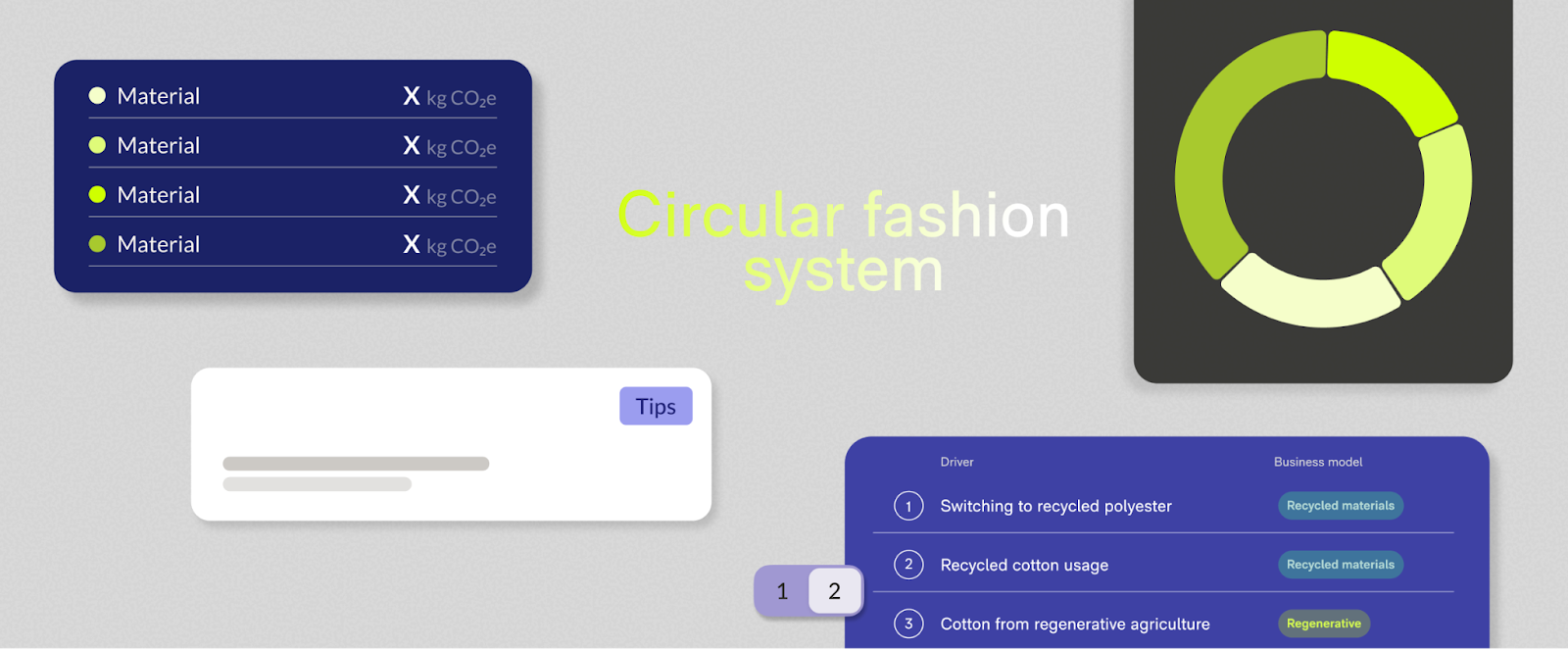
Each stage of the circular fashion system plays a role in preserving material value and extending product life. Together, they enable a regenerative model where waste is minimized, resources are recaptured and garments can return to a ‘like-new’ state, again and again.
1. Circular design
It all begins with intentional design. Garments are created to last, be easily repaired, disassembled, and ultimately recycled. Circular design means thinking beyond trends; opting for timeless styles, mono-materials and construction methods that extend lifespan and enable end-of-life recovery. This foundational stage ensures that every product is built for circularity from the outset.
2. Ethical manufacturing & delivery
The next stage is ethical and efficient production. This includes responsibly sourcing renewable or recycled materials and minimizing the environmental impact of manufacturing (e.g., reduced water use, energy efficiency, low-impact dyes). Delivery systems also matter. For example, bundled shipments, low-carbon logistics and reduced packaging all contribute to a lower-impact value chain.
3. Use, care & longevity
Once a product reaches the consumer, the focus shifts to maximizing its useful life. This stage emphasizes thoughtful consumption, proper care (like cold washing and line drying), and valuing garments through frequent rewearing. Brands may offer aftercare tips and repair guides or services, and consumers are encouraged to get creative with upcycling. Longevity is key to reducing the total impact of each item.
4. Return, collection & sorting
When a garment is no longer wanted, the next critical step is to keep it out of landfill. Collection and sorting systems help recover clothing for reuse or recycling. Whether through donation, brand take-back schemes or local programs, this stage ensures materials continue their journey rather than becoming waste.
5. Reuse, resale & redistribution
Many garments still have life left in them when they are discarded. Resale platforms, rentals, swaps and donations allow products to stay in circulation for longer, reducing the demand for new production and virgin resources. This stage of the circular loop helps preserve the material, social and economic value embedded in each item.
6. Repair & upcycling
Not everything needs to be replaced. Repair services, whether brand-operated or community-based, restore worn garments to working order. Upcycling, ever-growing in popularity thanks to social trends and inspiration, gives old or tired items a new, creative lease of life, often extending use far beyond what was originally imagined and even increasing the value of certain items.
7. Recycling & regeneration
When clothing can’t be worn anymore, recycling technologies step in. Mechanical and chemical processes break textiles back down into fibers, which can then be spun into new yarns and used again, preserving material value and reducing virgin resource extraction. This is how fashion truly begins to close the loop: by keeping recyclable materials out of landfill and in circulation.
Circular fashion in practice
More than just theory, the circular business model provides a practical blueprint for a more sustainable fashion industry. It’s about a systemic mindset change in how clothing products are manufactured, worn and disposed of, and now, fashion brands are stepping up. In practice, this means demonstrating that circularity is more than aspirational – it’s both implementable and a viable economic model.
Eco-design: Designing for optimized impact
Design is the seed of circularity. Clothes should be designed with their full life cycle in consideration, with design teams thinking about durability, repairability and recyclability from the initial sketch. This really pushes designers to craft pieces that stand the test of time, and which eschew fast-fashion runways.
For example, forward-thinking modular designs with removable components such as collars or sleeves allow for parts to be more easily fixed or swapped out, extending the life of the garment and facilitating recycling at end-of-life.
In other areas, brands are focusing on the ‘less is more’ principle. ASKET is designing for longevity with its purpose-driven, thoughtfully designed Permanent Collection, which operates a smaller ‘capsule’ style collection that is continually improved rather than releasing many items of poorly designed clothing with the expectation to cast a bigger net and make more sales.
This design-led approach is essential to value creation. By designing for longevity and disassembly, designers can make sure products and their materials maintain their utility and value for as long as possible.
Innovative materials: Lowering impact during manufacturing
The materials you select are key. Circular fashion depends on sustainable alternatives such as organic cotton, recycled fibers, and new textiles made from waste. By brands opting for recycled materials, like polyester from plastic bottles or cotton from pre-consumer scraps, they are reducing landfill waste and saving resources right out of the gate.
This is circular fashion in action: an essential part of closing the loop on the fashion production cycle. However, there are still hurdles. Ensuring the quality and consistency of recycled fibers can be a challenge, and scaling up the supply chain to meet demand is a work in progress.
Driven in part by a lack of materials options, many brands are beginning to invest more in R&D to develop new, high-performance materials and processes that are both sustainable and commercially viable, such as the footwear brand On’s LightSpray™ technology.
Technology: Climate tech for a seamless journey to circular fashion
Climate tech is rapidly becoming a key element of the backbone of a circular fashion system, powering the visibility, insight, action and scalability brands need to close the loop.
Tools like Vaayu’s carbon management software and Circular Impact Solution enable brands to measure and track their product carbon footprints and reduce environmental impact at every stage of the product lifecycle, from raw materials to end-of-life. It uses a Life Cycle Assessment (LCA) methodology grounded in science to calculate the carbon footprint of a product or the footprint of products across multiple impact categories. Vaayu also provides accuracy guidance to help brands understand and communicate uncertainty.
This level of granular insight makes it possible to design for longevity, model circular strategies like resale or rental, and calculate the emissions avoided through reuse and recycling. Rather than relying solely on new materials, climate tech shifts the focus toward smarter systems, measurable outcomes, and data-driven decisions that accelerate circularity.
Beyond product impact alone, Vaayu also supports partners with circular business models such as recommerce, rental, repair and off-price to understand and quantity their avoided emissions. In 2023 alone, Vaayu’s circular partners, including Otrium, Adevinta, Vinted and Schibsted Marketplaces, avoided 4,228,052 tonnes CO2e, equivalent to the carbon sequestered by 3,847,357 acres of US forests in one year. For a deeper dive into their circularity reports, check out Vaayu’s Reports page.
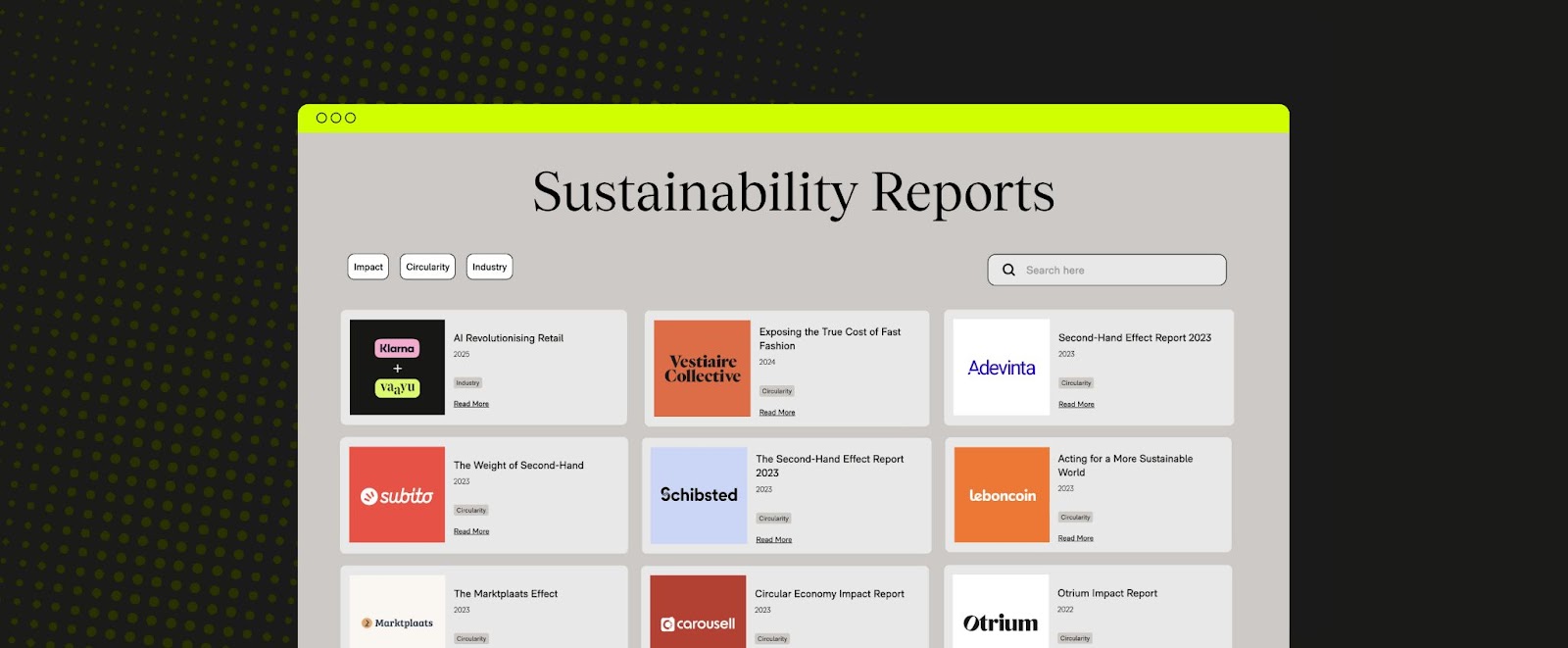
By embedding tech directly into supply chain and product workflows, such as PLMs, circular fashion becomes not just possible, but integrated, scalable, transparent and impactful.
The critical role of consumers in circular fashion
While brands and policymakers shape the industry from behind the scenes, consumers hold powerful influence in driving circularity on center stage.
Every purchase is a vote for fast fashion or for sustainability. By helping shoppers stay informed and make more conscious choices, brands can help their customers to collectively adopt lower-impact principles and more responsible shopping practices, helping reimagine our relationship with clothing.
Shifting mindsets
Breaking free from the fast fashion cycle starts with a mindset shift; seeing clothing not simply as disposable trends, but as lasting investments. A thoughtfully curated wardrobe of quality pieces promotes durability and personal style over fleeting novelty, helping reduce overconsumption and waste.
Making conscious choices
Encouraging smart consumer choices like researching brand practices, looking for trusted certifications (e.g., GOTS, Fair Trade) and shopping second-hand can educate shoppers on extending the life of their garments and shoes, and lower consumer demand for new resource-heavy production. Even small actions like providing tips on proper washing or learning simple repairs contribute meaningfully to a more circular fashion system.
Actively participating
Consumers can further support circularity by joining clothing swaps, repair events or using textile recycling services. Brands can support consumers to participate in take-back schemes, for example, to reinforce the demand for sustainable innovation and buying less but better. Speaking up for circular policies and making them increasingly accessible adds vital momentum for lasting industry-wide change.
Beyond the Buzz: Grounding Circular Fashion in Reality
Circular fashion holds huge potential, but turning ambition into action is where the real work begins. In recent years, we’ve seen bold pledges from brands across the industry: net-zero targets, closed-loop models and circular collections. But there’s often a gap between the headlines and the operational reality. Without robust systems, scalable tech and verified data, circularity risks becoming another buzzword rather than a measurable business model.
As the pressure mounts from consumers, regulators and investors, the industry needs to move from broad claims to concrete, auditable progress. Discrepancies in key environmental and economic claims are rife and highlight the urgent need for transparency and standardisation. The pitfalls of greenwashing are not just a reputational risk; they undermine genuine innovation and stall systemic change.
At the same time, companies must be honest about the limitations of circularity when paired with unchecked consumption. Rental and resale may shift the product lifecycle, but if volume and turnover remain high, we’re not solving the core problem – likely reshaping it. Circular business models must be built on true impact reduction, not just rebranding existing habits.
For brands, this means grounding circular strategies in science-based measurement and setting clear, achievable goals. It means building infrastructure to support take-back, repair, and disassembly, and backing up strategies, actions and claims with verified data.
Circularity isn’t a silver bullet, but it is a pathway. With the right tools, partnerships and commitment to accountability, fashion can move beyond the take-make-waste model toward something more durable, data-driven and future-fit.
Ready to move from intention to action? Even if you’re starting small, starting now is the key. Every tangible step is a shift toward a more circular future, and Vaayu’s experts are on hand to help your company move from linear outcomes to quantified and scalable circular impact. Get in touch to find out more.



.jpg)


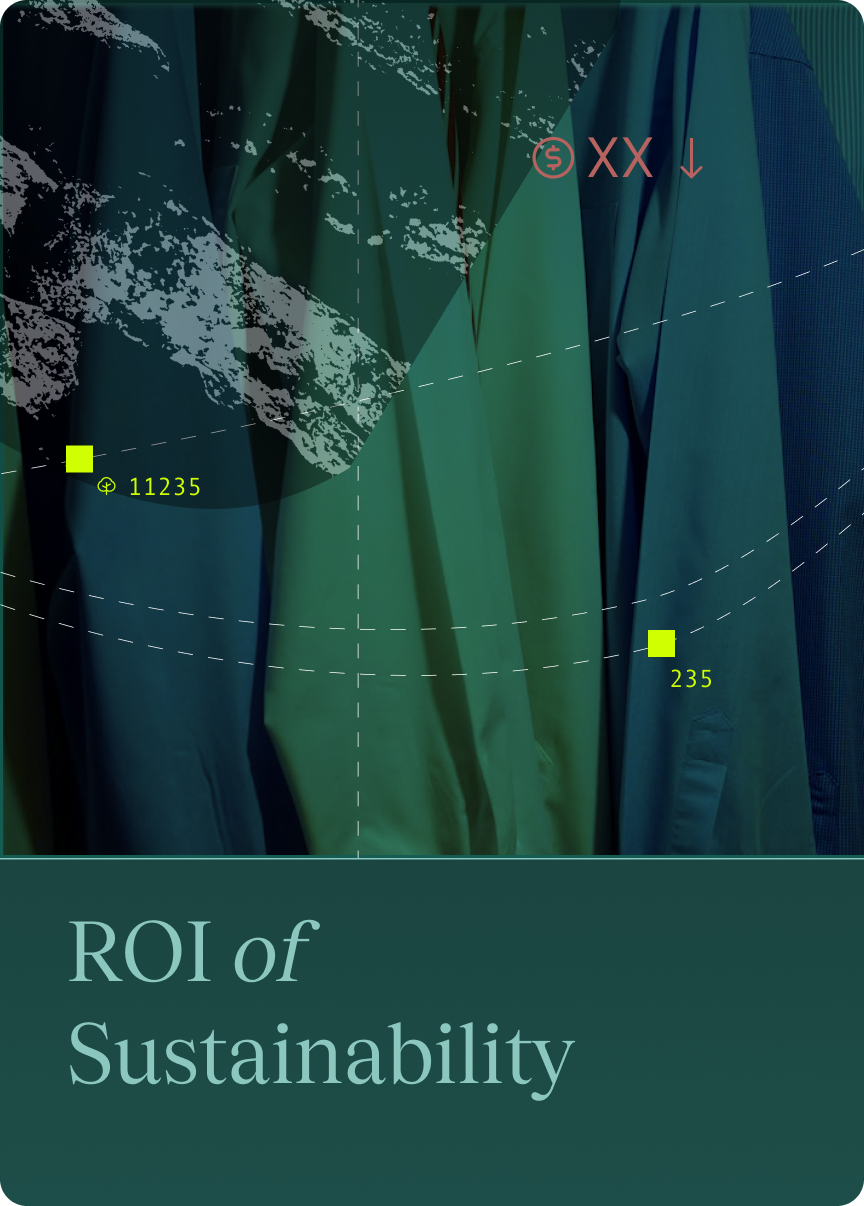
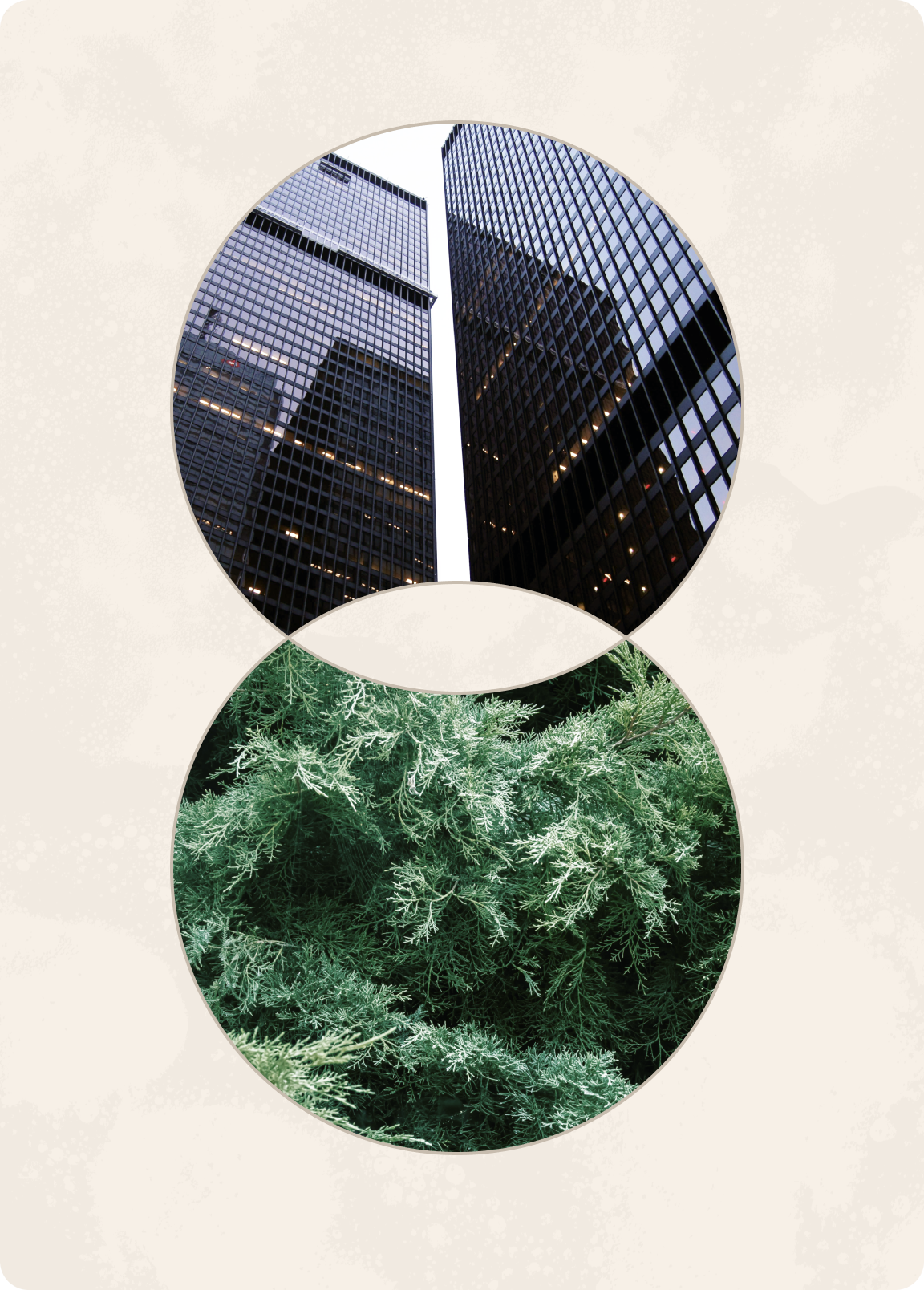
.png)
